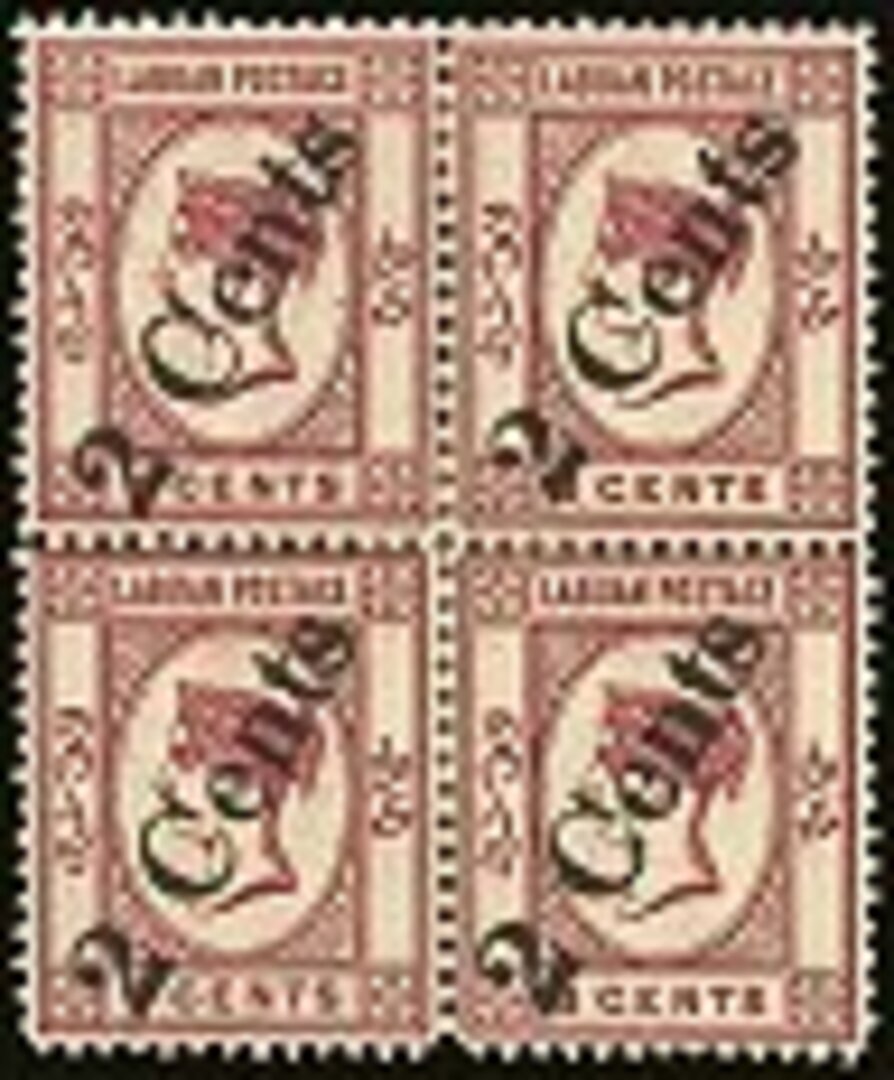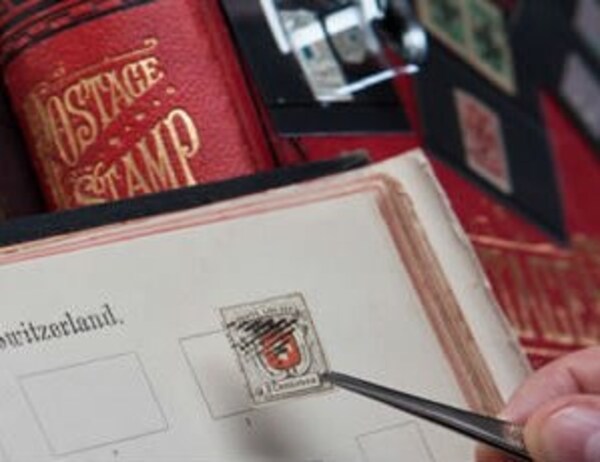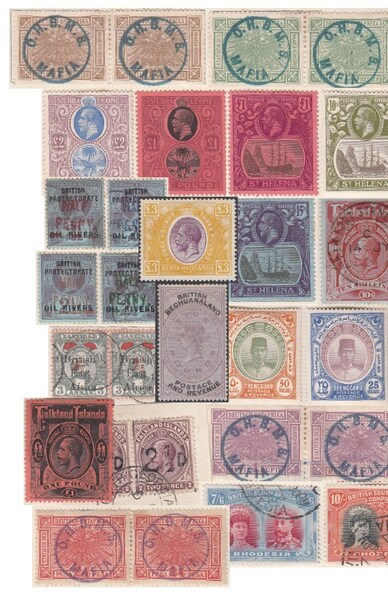A couple of years ago we offered a large collection of individual items from Labuan and figured it was worth writing a small blog about this interesting place. Many were from the early “Queen Heads” issues, an unusual design combining the young Queen Victoria alongside inscriptions in Arabic, Chinese and English. There are also many of the beautiful pictorial designs, either the overprinted North Borneo issues, or the North Borneo stamps with the engraved vignettes altered to read “Labuan”. Amongst these lots you will see individual stamps, complete sets, “Specimen” overprints, blocks & other multiples.
The “Queens Heads” were Labuan’s first stamps, issued by the British Colonial Administration in May 1879. Nevertheless, a Post Office had operated on the island from 1864, using a distinctive double circular post mark. Because of Labuan’s proximity to Hong Kong and India and the large amount of shipping that passed through the South China Sea, postage stamps from these two countries were used on mail sent from the island, together with those issued by the Straits Settlements. From 1877 Straits Settlements postage rates were adopted with a 3d premium surcharge for the transit from Labuan to Singapore. During the 1880s, a variety of surcharges were applied to this first design type due to frequent shortages and lack of regular supplies from England.
What is it that makes these atmospheric stamps so special? The answer requires a brief glimpse into British expansionist foreign policy in the mid-19th Century. Labuan is an island of approximately 3.7 square miles nearly 5 miles off the coast of Borneo, adjacent to the Malaysian State of Sabah and Brunei on the northern edge of the Brunei Bay facing the South China Sea. In the 1840s it was an inhospitable, uninhabited and mosquito infested area that nevertheless became an important Royal Navy base. The reason being that at the time piracy in the area was endemic. Merchants and seafarers demanded protection, together with the need for stability in the region as the British Empire grew, which resulted in an approach to the Sultan of Brunei who in effect was forced to sign a treaty that ceded Labuan to Great Britain in 1846 to serve as a strategic base to deal with the piracy issue and secure a British presence.
An army garrison was built and with the advent of cable communications a cable station was established. Additionally a significant source of coal was discovered. Labuan became a Crown Colony in 1848, with administration transferring to the British North Borneo Company in 1890 as a consequence of a sustained period of economic decline. Labuan became a part of the Straits Settlements Colony, administered from Singapore in October 1906 from which time Straits Settlements stamps were used. The unused remainders were officially cancelled using an oval stamp with bars and sold to collectors following reverting to British rule.
Now part of the Federation of Malaysia the island is an important financial centre with many institutions and banks having their offices in the capital Victoria. Malaysia is itself a country proud of its heritage with a population of over 28 million with many stamp collectors and a thriving economy. The philatelic history of Labuan is of great importance and offers collectors a chance to find interesting material in what some philatelists consider to have been an area that has been neglected in recent years.


 General
General
 General
General
 General
General